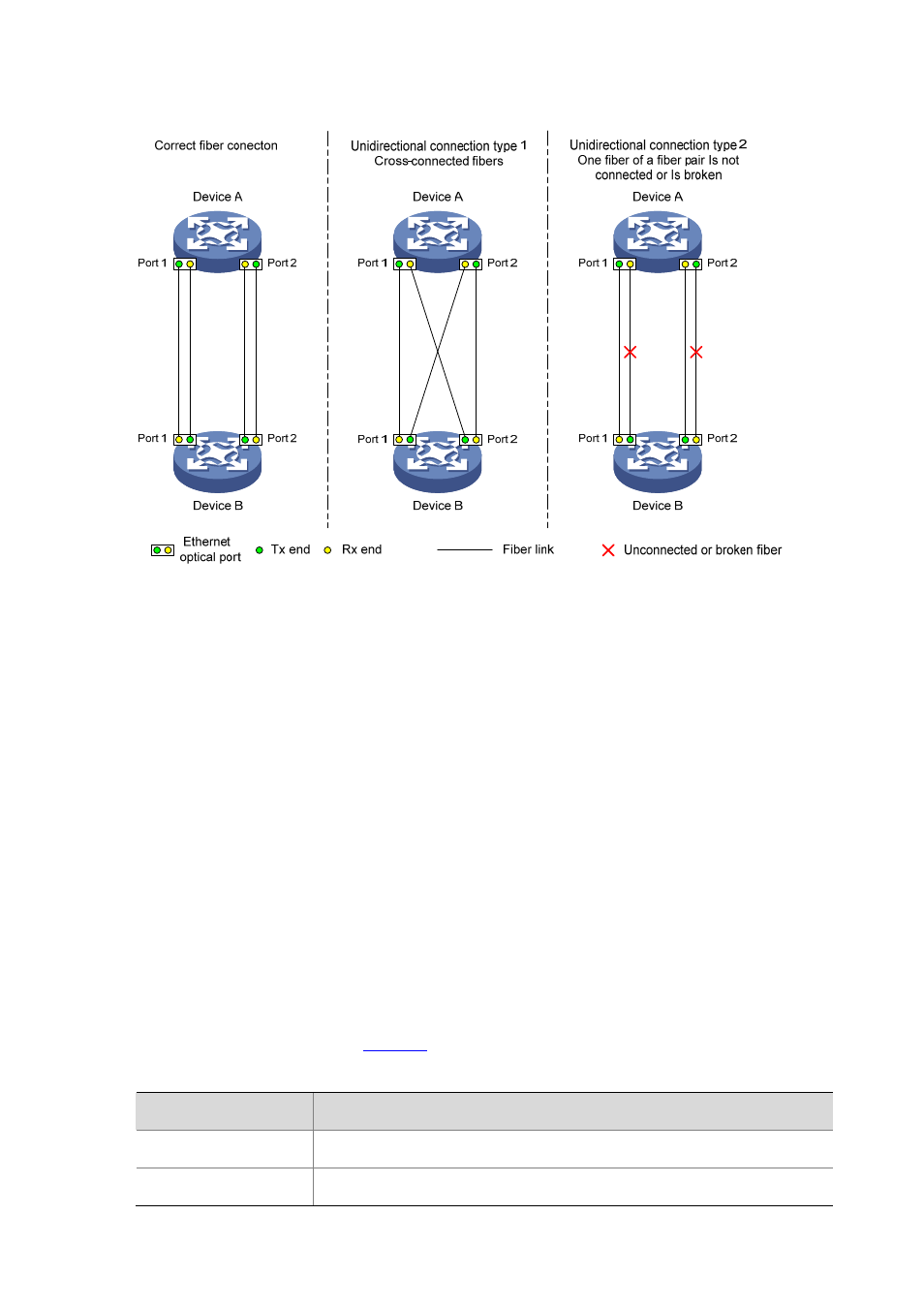How dldp works, Dldp link states, Figure – H3C Technologies H3C S7500E Series Switches User Manual
Page 52

6-2
Figure 6-1 Correct and incorrect fiber connections
The Device link detection protocol (DLDP) is a technology for dealing with unidirectional links (fiber
links or copper twisted-pair links) that may occur in a network. On detecting a unidirectional link, DLDP,
as configured, can shut down the related port automatically or prompt users to take actions to avoid
network problems.
As a data link layer protocol, DLDP cooperates with physical layer protocols to monitor link status.
While the auto-negotiation mechanism provided by the physical layer detects physical signals and
faults, DLDP performs operations such as identifying peer devices, detecting unidirectional links, and
shutting down unreachable ports. The cooperation of the auto-negotiation mechanism and DLDP
ensures that physical/logical unidirectional links can be detected and shut down and prevents failure
of other protocols such as STP. If both ends of a link are operating normally at the physical layer,
DLDP detects whether the link is correctly connected at the link layer and whether the two ends can
exchange packets properly. This is beyond the capability of the auto-negotiation mechanism at the
physical layer.
How DLDP Works
DLDP link states
A device is in one of these DLDP link states: Initial, Inactive, Active, Advertisement, Probe, Disable,
and DelayDown, as described in
.
Table 6-1 DLDP link states
State
Indicates…
Initial
DLDP is disabled.
Inactive
DLDP is enabled, and the link is down.
